Doepfer A-160 Handleiding
Doepfer
Niet gecategoriseerd
A-160
Bekijk gratis de handleiding van Doepfer A-160 (6 pagina’s), behorend tot de categorie Niet gecategoriseerd. Deze gids werd als nuttig beoordeeld door 67 mensen en kreeg gemiddeld 4.3 sterren uit 34 reviews. Heb je een vraag over Doepfer A-160 of wil je andere gebruikers van dit product iets vragen? Stel een vraag
Pagina 1/6

doepfer System A - 100 Clock Divider A-160
1
1. Introduction
Module A-160 (Clock Divider) is a frequency divider
for clock signals, designed to be a source of lower
frequencies, particularly for rhythm uses.
The Trigger input will take clock signals from, eg., an
LFO, MIDI sync, or the gate from a MIDI-CV interface.
At the outputs, you have access to the sub-divided
clock signals, from half the clock frequency down to
1/64.
The A-160 also has a reset input. Whenever a reset
signal is sensed, all outputs are set to zero, until the
reset voltage disappears.
The Clock Divider can be used in combination with the
A-161 Clock Sequencer to produce stepped sequen-
ces with a length of from one to eight events.
/ 2
/ 4
/ 8
/ 16
/ 32
/ 64
Trig.
In
Res.
In
A-160
CLOCK
DIVIDER

A-160 Clock Divider System A - 100 doepfer
2
2. Overview Indicators:
1 LED : Clock / 2 indicator
2 LED : Clock / 4 indicator
3 LED : Clock / 8 indicator
4 LED : Clock / 16 indicator
5 LED : Clock / 32 indicator
6 LED : Clock / 64 indicator
In / Outputs:
! Trig. In : clock signal input
" Res. In : reset input
§ /2 : 1/2 clock frequency output
$ /4 : 1/4 clock frequency output
% /8 : 1/8 clock frequency output
& /16 : 1/16 clock frequency output
/ /32 : 1/32 clock frequency output
( /64 : 1/64 clock frequency output
A-160
CLOCK
DIVIDER
/ 2
/ 4
/ 8
/ 16
/ 32
/ 64
Trig.
In
Res.
In
➀
➁
➂
➃
➄
➅

doepfer System A - 100 Clock Divider A-160
3
3. Indicators
1 LED ... 6 LED
LEDs 1 to 6 indicate the status of each of the sub-
divided frequencies at outputs § to (.
4. In / Outputs
! Trig. In
Trigger input: patch the frequency to be divided in
here.
" Res. In
Socket " is the reset input for the A-160. When a
reset voltage is sensed, all outputs go to zero, for as
long as the reset voltage is present. (ie. a ‘static
reset’)
H With a Clock Sequencer (A-161) connected,
every time the A-160 senses a reset signal,
the A-161 returns to output ! .
P With the help of the reset input, you can
produce sequences with less than eight
steps. For instance, by patching output / of
the A-161 to the reset input socket " of the
A-160 you get a six-step sequence. (Instead
of going to step seven, it resets to step one.)
§ /2 ... ( /64
Sockets § to ( are the A-160 outputs, from which the
sub-divided clock signals are available.
5. User examples
"Ping-Pong" effect
The patch in Fig. 1 produces a "Ping-Pong" effect: with
each note on the keyboard (gate signal) the audio
jumps between left and right outputs - OutL and OutR .
The A-160 is halving the gate frequency, and trigge-
ring the A-150 VCS, so that each of its outputs is
active only every other note.
ADSR envelope with re-triggering
In the patch in Fig. 2, an ADSR is re-triggered by a
square wave LFO, sub-divided in the A-160 by a factor
of four (output $). The original whole LFO oscillation is
patched to the re-trigger input on the ADSR. In this
way, a new repeating envelope is created.
Product specificaties
| Merk: | Doepfer |
| Categorie: | Niet gecategoriseerd |
| Model: | A-160 |
Heb je hulp nodig?
Als je hulp nodig hebt met Doepfer A-160 stel dan hieronder een vraag en andere gebruikers zullen je antwoorden
Handleiding Niet gecategoriseerd Doepfer

31 Maart 2024

8 Juli 2023

6 Juli 2023

4 Juli 2023

3 Juli 2023

3 Juli 2023

2 Juli 2023

2 Juli 2023

30 Juni 2023

30 Juni 2023
Handleiding Niet gecategoriseerd
- Mode Machines
- Integral
- BERTSCHAT
- Digium
- Waeco
- La Pavoni
- Senseca
- Laifen
- Fantech
- Siedle
- Saro
- Domyos
- Micsig
- Uniprodo
- Riviera And Bar
Nieuwste handleidingen voor Niet gecategoriseerd

16 September 2025
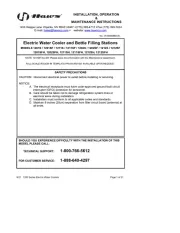
16 September 2025
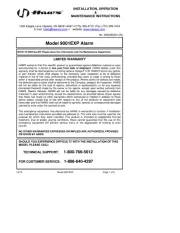
16 September 2025

16 September 2025
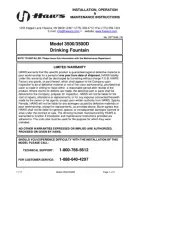
16 September 2025
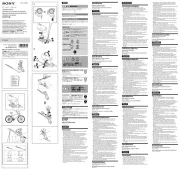
16 September 2025

16 September 2025

16 September 2025
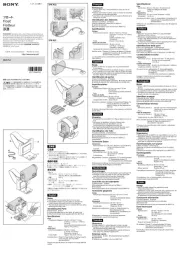
16 September 2025
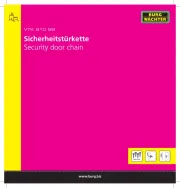
16 September 2025